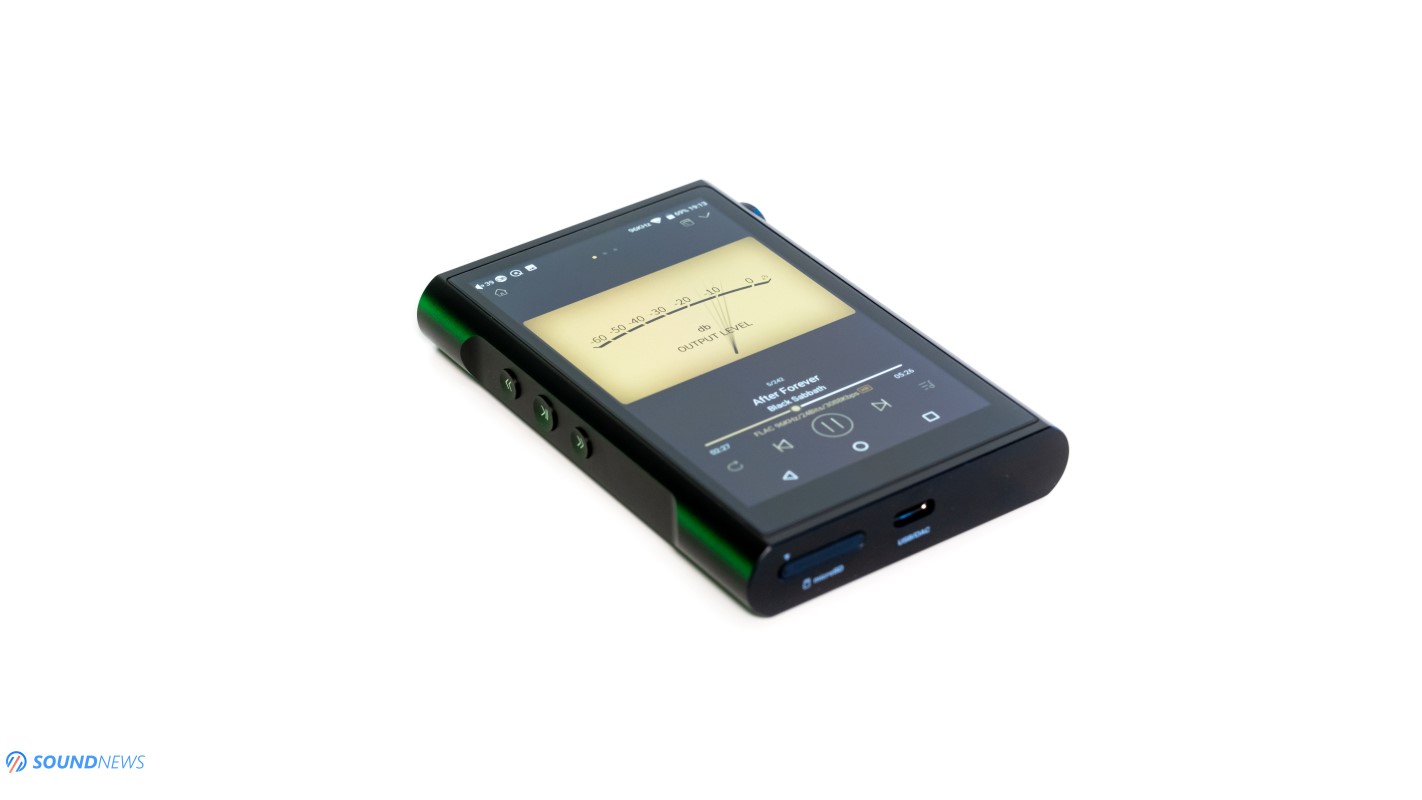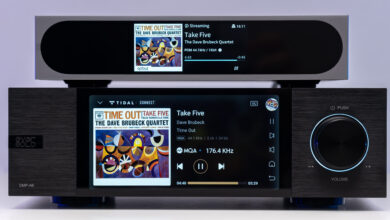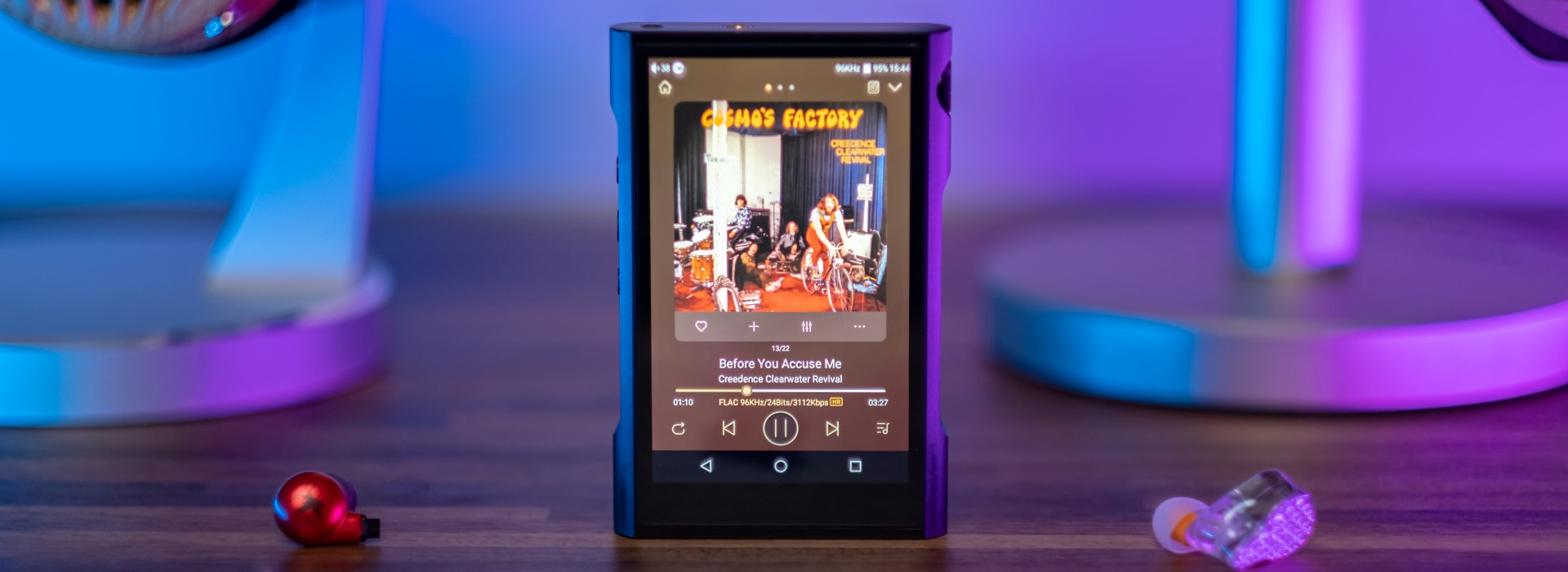
My Video Review:
I still remember when ESS Technologies released their newest all-in-one ES9218 DAC and headphone amplifier on a single SoC silicon a few years ago, that would revolutionize the affordable DAP market in a very good way. It meant replacing a big chunk of PCB space with just a single chip that wasn’t bigger to a pinky fingernail. Immediately after, I’ve started sending emails to digital audio player manufacturers begging using this little wonder, so that portable DAPs could become small and portable yet again, without skipping on the feature set like full Android experience, 3rd party app support with all the streaming services on board. I’ve started with FiiO, they replied that it sounds like a great idea and their M3 PRO released a few months later. Unfortunately, it wasn’t a fully balanced output DAP and it didn’t have an Android OS. I wasn’t very happy about that one and gradually I thought that such devices would never appear on the market. When I’ve seen Hiby Music releasing their R3 PRO Saber DAP with dual ES9218 DACs, I’ve jumped from my chair performing a Hadouken move, hoping it would become That device that I was dreaming for quite some time. Alas, lacking a powerful CPU, it couldn’t run Android OS, skipping on 3rd party apps and on many other features. My dreams were shattered yet again, up until I’ve got a funny newsletter a few months ago from Shanling, informing about their newest and the smallest portable gizmo that rocked an Android OS, powered by the same CPU that drives their high-end M8 and M30 DAPs, while being driven by two of the newest ES9219 DAC chips, that ESS Technologies just released. To say that I was quite happy, would be a big understatement and while I think they came a little too late with their M8 DAP, the smaller M3X came exactly at the right time, when nobody was expecting it, me included. Armed with a 4.2” HD screen, rocking a powerful CPU, a fully unlocked Android OS, supporting all the newest streaming apps, while being half the size of a modern smartphone, my curiosity skyrocketed as it had everything I ever wanted from a DAP, while costing as little as a midrange pair of IEMs. My curiosity paid off, it seems that I’ll be doing a world-first review for the little David right here and let’s get this thing unboxed.

Unboxing Experience
M3X is coming in a very cool and unusual looking packaging that I’ve experienced already with their M6 DAP. The outer box informs that it is a Hi-Res and Hi-Res Wireless capable unit, on its left side I see the MQA, LDAC and AptX-HD logos, which makes me feel better already. The smaller navy-blue colored box has some interesting angles and cut-outs, creating an interesting or dare I say unique unboxing experience. M3X is surrounded by lots of foam with a velvety like texture on top of it. Under the unit you can spot a small accessory box that is holding a high-quality USB-C charging cable with a textile outer jacket. Lastly, there is a wider accessory box that houses a warranty card, a detailed quick start guide and a surprise: two screen protectors that can be applied on its screen or on its back that is also covered with glass. Unfortunately, no carry case can be found in the package, that is the biggest let down, but they are selling a very cool leather case for around $30. Shanling sent me on and after closely inspecting it, it seems to be of the highest quality, it will fully protect the unit while nicely dissipating the heat coming from its back. It is a must-buy accessory if you ask me.
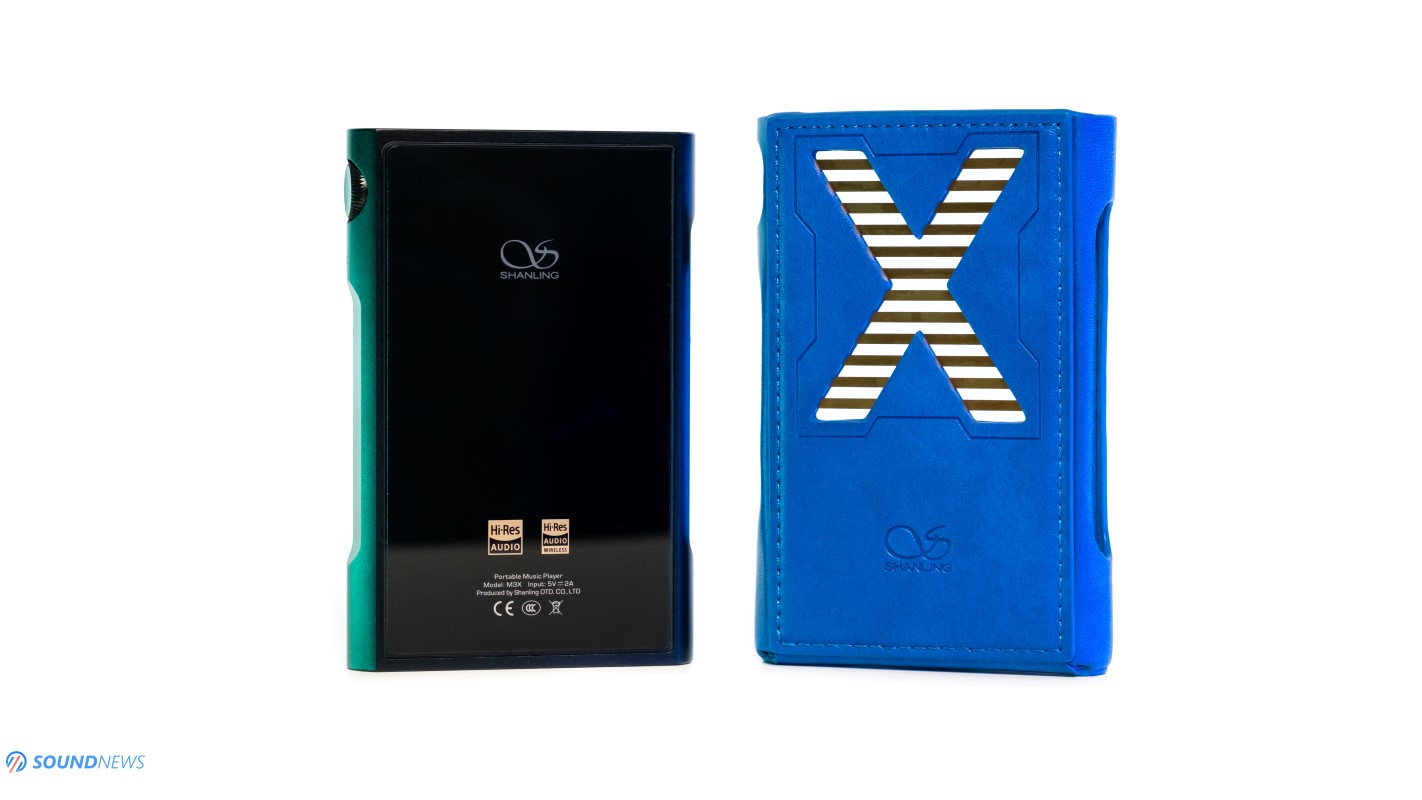
Design & Build Quality
Funny thing is that M3X looks exactly like a miniature version of Shanling M8, that I’ve crowned as the best-looking DAP I’ve put my hands on. It is 100% the same, just smaller, much lighter, with just a single change: instead of an interchangeable headphone socket, they put two jacks on the M3X, more exactly a regular 3.5mm socket and a balanced 4.4mm Pentaconn that slowly is becoming my favorite balanced jack. I like that it follows the same design language to the rest of its family, it has pretty much the same shape with M6, M6 PRO and M8, hell even that ginormous M30 has the same shape and that is a good thing, because you can recognize them from afar and we all know that brand identity is important. It has the same button layout and user interface; it feels very similar as coming from another Shanling DAP to M3X is like using the same device.
I like that it rocks only 3 buttons and a single volume wheel that can work as an On/Off Button, I mean it can’t be much simpler than this. You have your play/pause, next and previous buttons, two headphone jacks, a volume wheel and that’s it! By comparison, some other brands are adding unnecessary buttons, placing them on multiple sides, confusing the user in the long run. M3X is quite a handsome DAP, I like the way it stays in my hand, it’s a minimalist cool looking device. It’s machined from a single block of aluminum, with two glass sheets glued to its front and back. The glass is occupying the whole surface, making it looks like a bezel-less device. Its learning curve takes exactly one minute and I wish some other DAPs would offer the same exceptional user experience.
As usual with nicer DAPs, you can find small nuances that are adding a high-end flair to it. For example, the Shanling logo, Hi-Res and Hi-Res Wireless certifications are all placed just behind a glass sheet on the back. Another interesting aspect is that the volume wheel is not sticking out at all, it sits at the same level with its upper body and in a tight pocket you won’t accidentally turn it up or down. You can also lock its wheel and all its button from its user menu if you will. Its buttons are flushed and very firm to the touch, without wobbling at all. M3X seams to be nicely build and at only 168 grams, this is what I’m calling a portable unit that could go anywhere. I really dig its small dimensions and knowing that I am getting a full-blown Android experience makes me even happier.
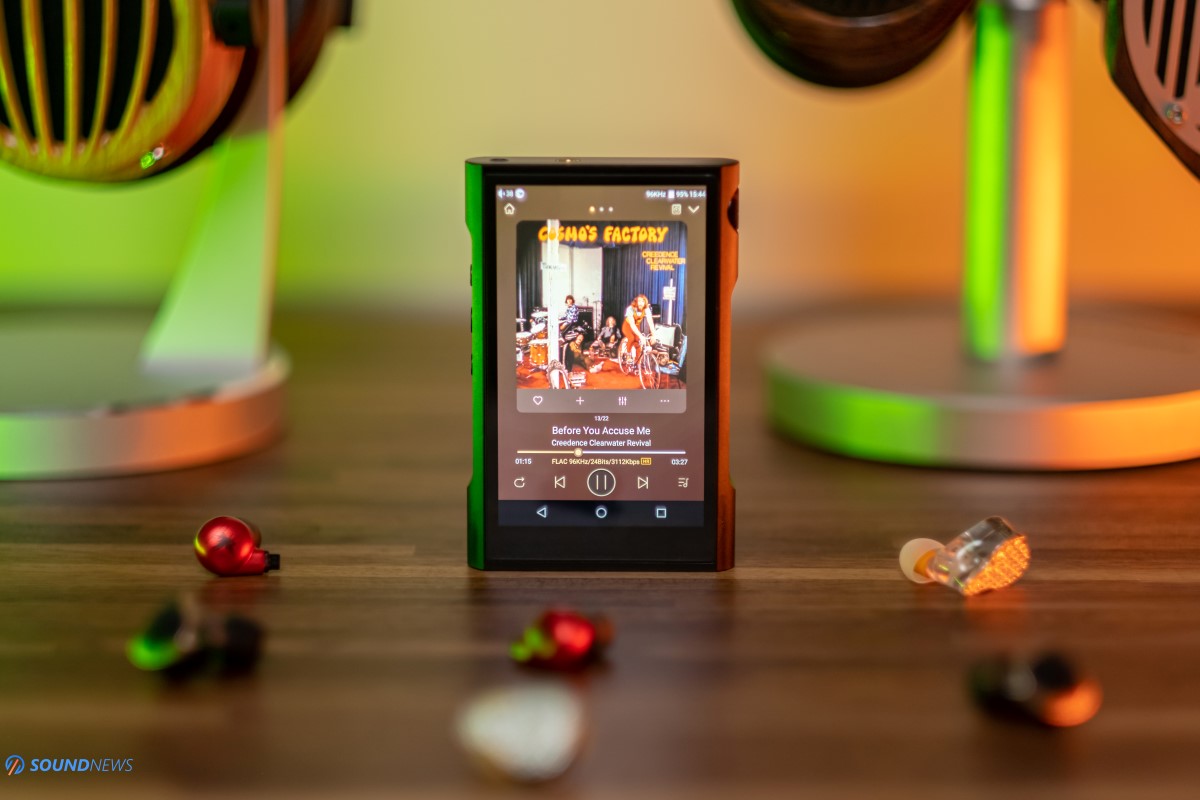
Buttons & Layout
This is easiest part as Shanling made it user friendly and ergonomic. There is just a simple volume wheel to its right, that works as an On/Off button. To its left, you can spot a Play/Pause, Previous and Next buttons. On the bottom there is an USB-C port used for charging or just in case you’ll want to use it as a dedicated DAC for a stereo setup. A MicroSD card slot will be expanding its internal 32 Gb ROM memory, you can use cards up to 2 Tb in size.

Display
M3X uses a somewhat smaller 4.2” IPS panel with a resolution of 768 by 1280 pixels. It is a decent HD screen, with a density of 356 pixels per inch. I find it quite bright, with good viewing angles and with just a decent contrast ratio. Don’t expect a smartphone like contrast and vibrant colors, it’s decent for what it is, but it will not challenge modern smartphones anytime soon. On the plus side, its unusual 3:2 aspect ratio makes it a lot more comfortable to hold and more pocketable. If you want, you can do some light web browsing, you can check some Youtube videos, most of the 3rd party apps looked crisp and sharp due to its high PPI. You can see its front glass surrounding the whole area creating an illusion of a bezel-less screen with a high display to body ratio, but once you power it on, you can spot a small gap bellow its display assembly.
Battery
Shanling went with a 3200 mAh battery and while that might seem like a small cell, it’s the right size for a device like this. Considering that ES9219 is a all-in-one SoC bypassing the need of op-amps and conversion stages, Shanling squeezed 23 hours when a single DAC is being used and 20 hours when both DACs are being used. On the balanced out it can reach up to 19 hours and 46 fricking hours over Bluetooth! M3X just became the longest lasting player in Shanling’s portfolio and considering there isn’t a big difference in run-time between single and dual-DAC, I will be using the dual-DAC configuration for the best results.
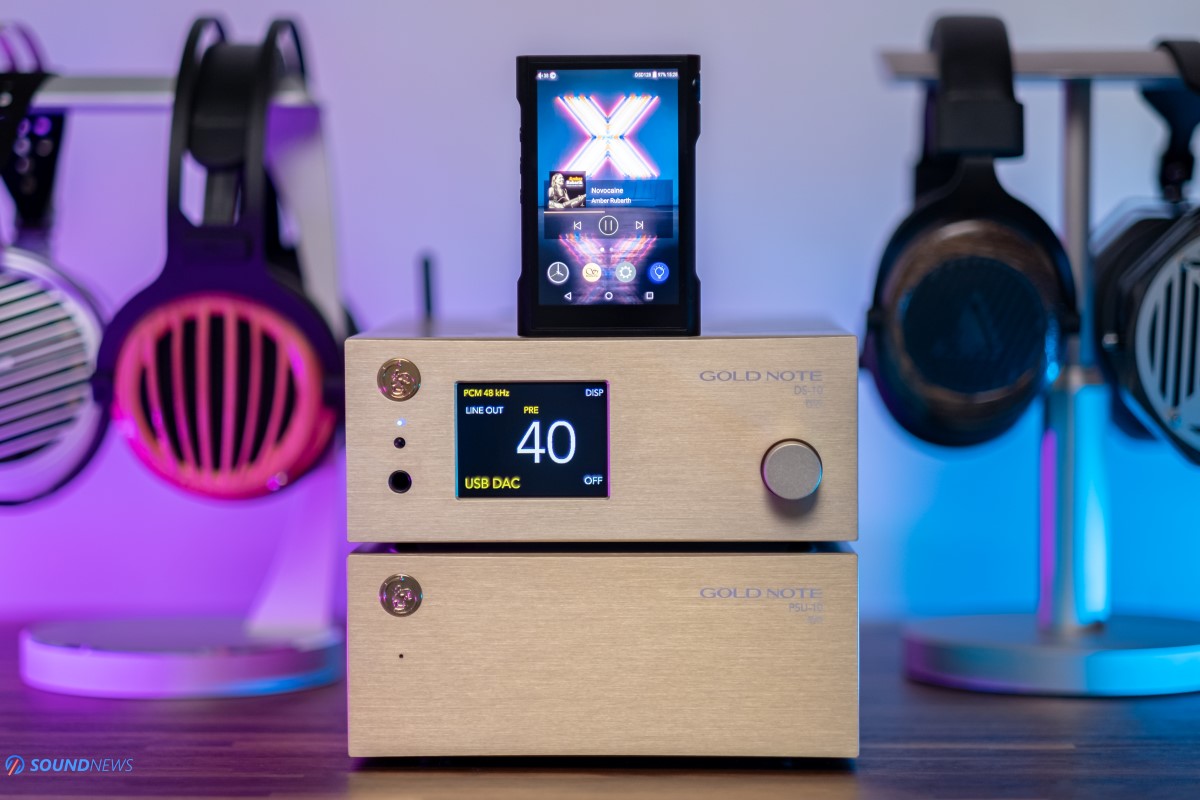
Under the Hood of M3X
The little DAP rocks the same strong and reliable Snapdragon 430 that is powering their higher-end units, like M8 DAP ($1660) and M30 transportable DAP ($3600). While I don’t think I’ll ever test their M30 transportable unit, I have the M8 besides me so I can test both units side by side when it comes to speed and UI. While Snapdragon 430 might sound like an entry to mid-level SoC by today standards, for a DAP that is one of the fastest and reliable CPU. It’s an 8-core CPU that can reach a clock speed of 1.4 GHz. Shanling equipped this one with 2 Gigs of RAM memory, from my tests that is enough even while multitasking. When I was streaming Hi-Res content via Wi-Fi and then sending all that data to a wireless headphone via LDAC codec, it didn’t slow down much. There might be some light stuttering in its Android Mode, especially while listening to music and browsing web-pages in the background, but that happened not that often. As for internal memory, M3X has 32 Gb of storage memory. That isn’t much, but you can expand it with MicroSD cards up to 2 Tb in size.
As you can expect, it supports Google Play Store, from which you can install any app you could possibly desire, including games, streaming apps like Tidal, Spotify, Deezer, Apple Music and so on. You can install YouTube, mail clients, anything really. Tidal Hi-Fi worked great for me; I could even listen to my offline music. If you’re an APKPure or CoolApk user, Shanling left them by default, so again, you can download and install pretty much any app.
At the heart of M3X are staying two of the newest generation DAC chips from ESS Technologies. Those are their newest low-voltage ES9219 converters. If you check its datasheet, it seems like one of the highest performance 32-bit mobile audio solutions that can reach a signal-to-noise ratio of 130 dB in a dual-mono configuration, it has a dynamic range of 121 dB in stereo mode and a total-harmonic-distortion of -114 dB.
The most important and the most interesting aspect about this silicon, is that besides decoding zeroes and ones, it also amplifies the analog signal by incorporating a dedicated headphone amplifier circuit and the final output stage. This way, they achieved the shortest signal path, as no additional circuitry is needed to drive your precious headphones. Since Shanling used two ES9219 in a dual-mono configuration, the whole circuitry is fully balanced, offering up to 240 mW of power on the balanced jack and up to 100 mW on its regular 3.5mm jack.
Shanling employed two high-performance crystal oscillators and an improved FPGA algorithm will be providing a better accuracy and an enhanced performance when decoding PCM and DSD material. M3X is a champ when it comes to decoding higher-resolution files, it will accept 32-bit 384 kHz PCM files, DSD256 files will be decoded natively and there is another surprise: it will natively unfold and decode MQA files. So far this is the smallest and one of the most affordable MQA capable DAP on the market.
As for wireless tech, it supports 2.4 GHz and faster 5 GHz Wi-Fi bands, plus all those fancy Bluetooth codecs as AptX-HD and LDAC. It can work as a Bluetooth sender or receiver (two-way Bluetooth) and thanks to a newer BT chip, it can send and receive data in the fastest LDAC codec.
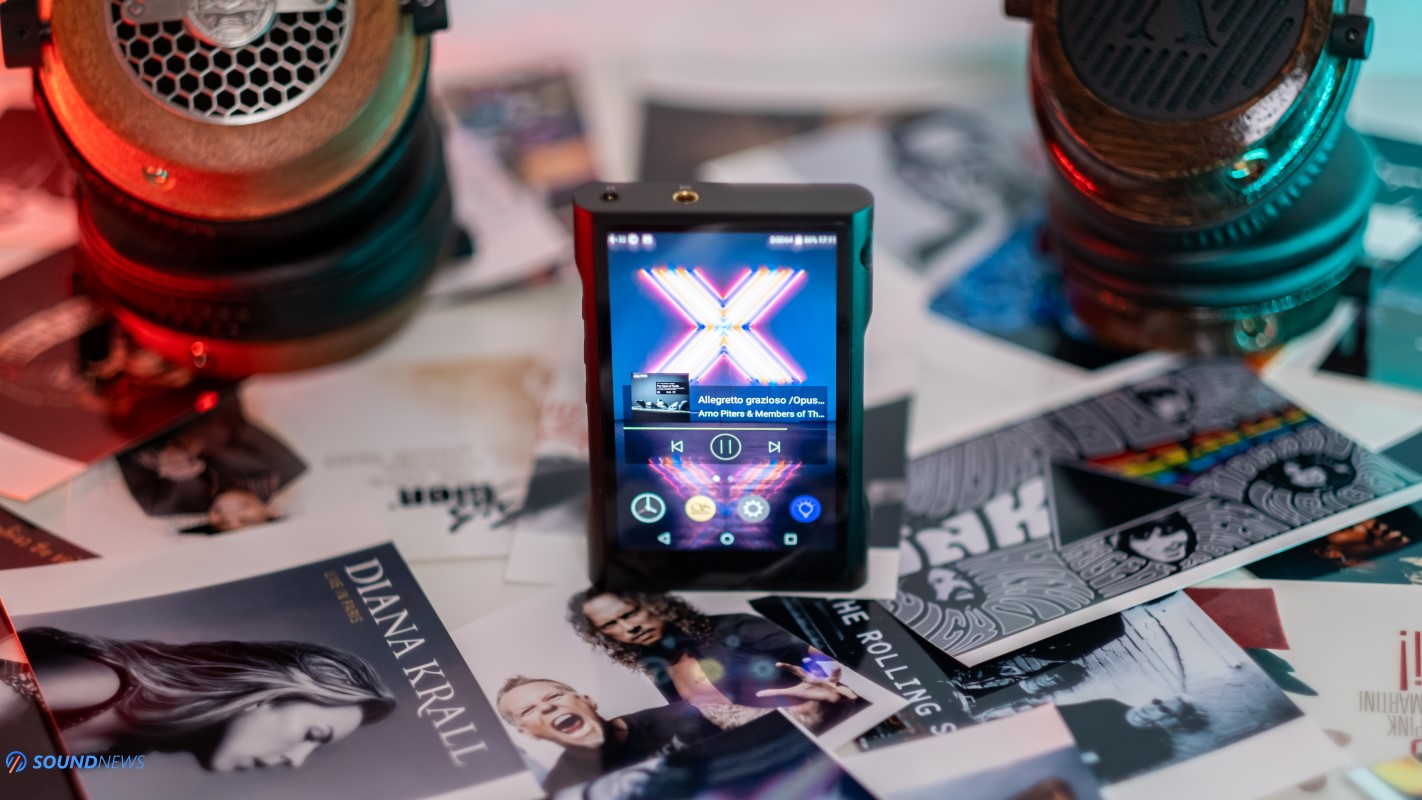
Graphical User Interface (GUI)
M3X uses a fully unlocked version of Android 7.1.1 and currently I’m running the firmware version 1.3. Shanling lets you choose two working modes for it:
- Android mode, which lets you install and use any 3-rd party app. Shanling developed what they are calling AGLO Technology, which is short for Android Global Lossless Output, meaning that music from all 3-rd party apps will be processed correctly at its native sample rate. They disabled the stock Android ASRC, that unlocks the full potential of M3X even in the Android mode.
- Prime Mode, which completely disables its Android interface and lets you use the M3X as an old-fashioned music player. No more apps, no more notifications, no nothing, just you and your offline music collection.
Their own music playback software is called Shanling Music, it has all the important stuff a software music player should have, you can browse by anything you want, including by folder as I am doing, you can transfer your music wirelessly and even connect it to a UPnP (NAS) server.
There are a lot of settings in there, I like that it can play DSD files natively, not just DSD over PCM (DoP), it has a proper EQ that starts from 31 Hz and ends at 16 kHz and you can adjust it from -12 dB up to +12 dB.
Overall, its GUI seems polished enough (at least on FW 1.3), M3X moves decently fast, I didn’t encounter stuttering even while streaming Hi-Res content via Wi-Fi or while playing DSD files natively. M3X is a quite a fast-moving DAP, one of the fastest I’ve tried, but I can’t back-up my claims since AnTuTu Benchmark is stopping for no reason at Terracotta test. On my daily tasks, it performed pretty much on the same level with their M8 and that was one of the fastest I’ve experienced. Alright folks, enough with the talk, let’s check how it sounds!
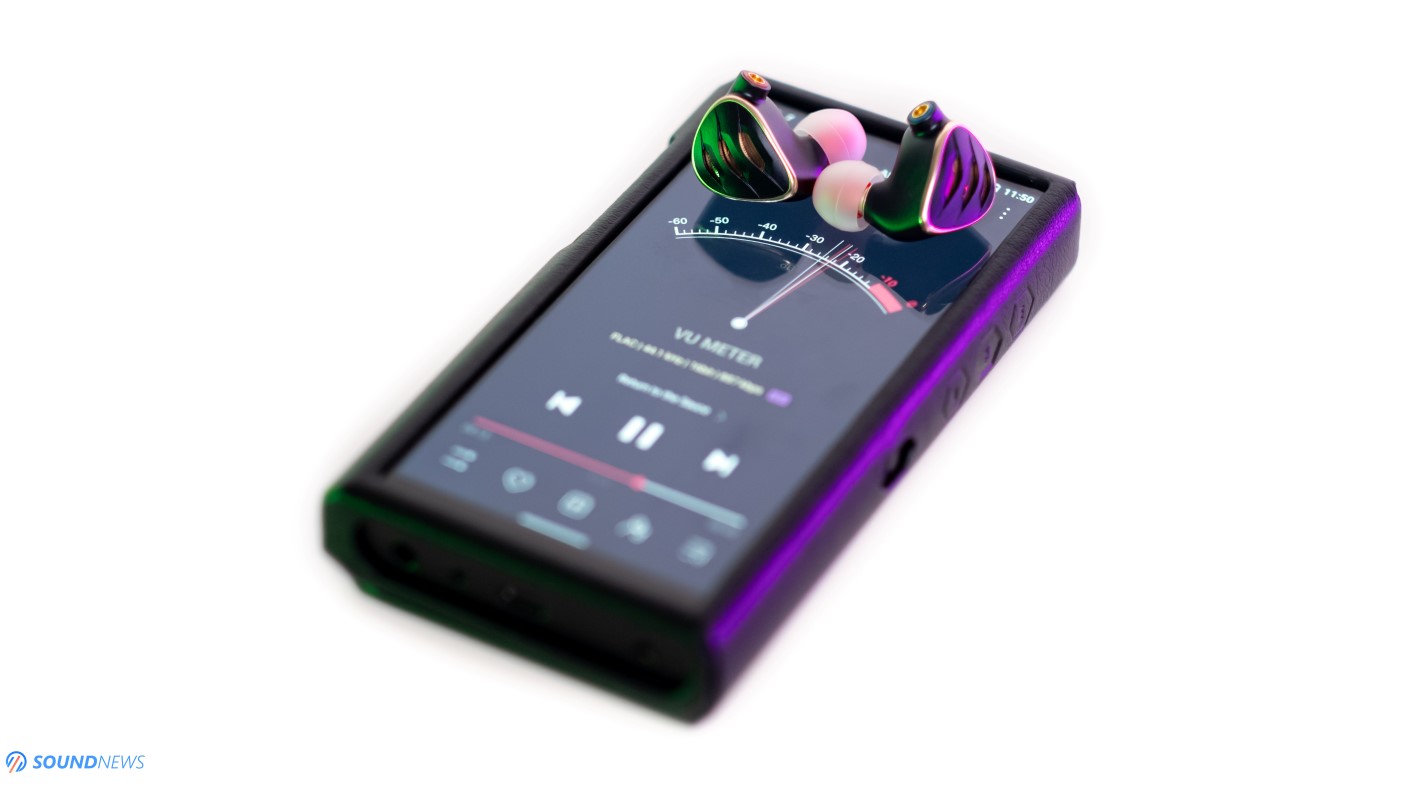
Sound Performance
I. Preliminary Sound Impressions
So how does the smallest and smartest DAP of Shanling is sounding with IEMs, portable headphones and full-sized cans? For starters, it’s an extremely fast and highly resolving unit, with plenty of details being uncovered from your tracks and it sounds quite snappy and engaging. The bass output felt clean, lacking any kind of distortion while going to the deepest pits, easily reaching 20 Hz notes. The most important aspect is that its dual ESS-Sabre configuration didn’t sound bright at all, I was deliberately using brighter IEMs like FiiO FH7 and full sized headphones as Hifiman HE1000SE and if those aren’t scratching my ears and I’m not showing my teeth, then everything’s fine and my deepest fears are now dust in the air.
I’m yet to experience a bright sounding DAP from the house of Shanling, even their ESS-Sabre equipped Q1 unit sounded warm and smooth for the most part. I guess their custom FPGA coding is doing some mumbo-jumbo adding warmth and a heavier tonality, seriously improving the end result. Listening more and more music, I was surprised by sheer power coming out of it. Driving a pair of Hifiman HE1000SE is not an easy treat and yet at around 80 out of 100, It was already way too loud for me, even with high-dynamic range audiophile recordings. My usual mood-lifting music sounded quite impactful, M3X was keeping up with the fastest tunes, while offering back a nice driver control and a faster decay of the notes. It reminds me a little about the Matrix Mini-i PRO 3 DAC that I’ve reviewed a few months ago, it has the same technicalities and by that I mean: clean, detailed, undistorted, linear in the frequency response, fast and snappy sounding all the time. While it’s indeed quite linear, without a bump in the frequency range, I never find it boring or lean sounding, on the contrary it was pressing the gas pedal, always challenging my playlist and the headphones that were attached to it. I was smiling all along even with sharp sounding IEMs and that is a good thing in my book.
The DAP business isn’t new to Shanling, they are still one of the pioneers of the post-iPod era and it really shows when listening to the little M3X. The unit itself seems polished enough and the sound performance speaks volumes to me. I’m happy to experience a nice layering and holography on the balanced output, older tracks of Deep Purple, Queen and Led Zeppelin sounded decompressed, quite airy, increasing the void space between the musical notes and I didn’t encounter an up-front and congested soundstage as it usually happens with entry to mid-levels DAPs.
The only thing that might not appeal to anyone is its reference tuning, that will impress with its technicalities and less so with its musicality and a heavier tonality. That bold and muscular sound of M8 can’t be found in here, as M3X walks a different path. In some ways the little fellow is more honest, it isn’t beatifying your music in any way and that can be a huge plus or just a con, depending on what kind of listener you are.

II. Soundstage & Depth
Here’s the thing, if you want the nicest depth and layering, go with its balanced output that has a much better channel separation of 115 dB compared to 75 dB on its single ended output. With open-back desktop class headphones, the change is immediate and very obvious. I was listening to Child in Time by Deep Purple (Qobuz / Tidal) and suddenly the vocal performance increased in size like the singer had healthier lungs, drums went a few steps backwards like I have upgraded my headphones from semi-open to fully open-back ones. If you don’t have a balanced cable yet, I recommend using its double DAC option until you get a balanced cable. That 4.4mm balanced output might be an accessory on some other DAPs, but on this one it’s a must.
Even so, M3X didn’t remind me about my desktop setup as their M8 did and while closing my eyes, I could feel that I am listening to a portable device, as there was an invisible wall that sounds were hitting at some point. The sounds weren’t flying into the abyss, but felt closer to myself. I’m about the width and the height of the sound that didn’t mimic the sound of their M8 DAP or of a desktop setup. I can’t really mention a limitless open-wide stage that stretched in all directions, it felt more like listening to a rock concert inside your garage. All the sounds were going past my shoulder level with open-back headphones, but those stood inside my head with IEMs and portable over-ear headphones. Nonetheless, I was expecting this and I’m Okay with such a presentation, M3X still has a nice layering, a decent amount of air is always traveling around and I’ve never experienced clutter or muddiness, so I am more than pleased by its performance in here.
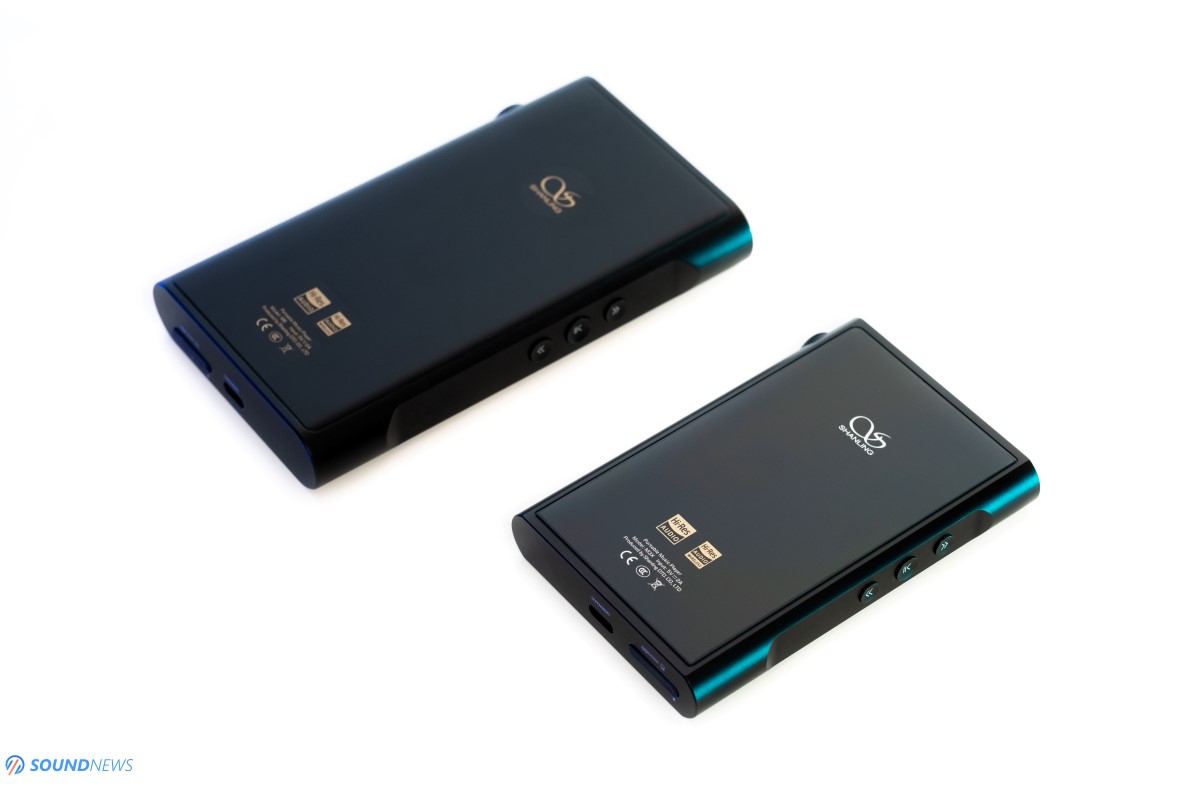
III. Transient Response
In my humble opinion, this is where the little M3X shines a little brighter compared to mid-level DAPs. Shanling’s own Q1 DAP wasn’t that impressive in here, always choosing a relaxing presentation and a slower pace. Compared to that one, M3X feels like an Italian sports car, it is considerably snappier, much faster sounding, like nothing is in its way. If on Q1 the drummers were gentler with their drum kits, bass players weren’t slapping their naughty guitars that hard, everything felt toned down a bit, decreasing its dynamic range in the process. M3X doesn’t have that invisible brake pedal and that is probably its best trait yet. I’ve went berserk with a lot more electronica and rock tunes and M3X was always running at the same level, injecting higher dynamics and of course increasing my mood levels in the process. The tiny capacitors that Shanling used in this DAP, are exceptionally good and known to be instantaneous in their presentation, without adding color to the music. Those Tantalum caps surely improved its bass delivery and more importantly its weight and more important its final kick. Compared to Q1, M3X felt meaner and naughtier, suddenly drummers started hitting harder and guitarists slapped those strings like they stole it. Surprisingly, even several desktop headphones sounded alive and hard hitting. The biggest standouts for me were the Kennerton Wodan, Erzetich Phobos and the Hifiman HE1000SE. Never I would believe that such a handy little player, would awake those drivers from their sleep and control them with an iron grip.
I don’t think Shanling developed their little DAP so resilient and courageous with desktop class headphones in their minds, but hey…it works and sound pretty sweet with them. When I moved to local folk-rock that raised me and formed part of my personality, I started tapping my right foot, moving my body to the rhythm of music, a clean sign that something is clicking into place. Longer bass notes were sustained nicely and decayed naturally from the landscape and even several bass layers made an appearance in those tracks. In the end, M3X appeared as a fast, nimble and punchy sounding DAP and that is all you need to know about it in here.
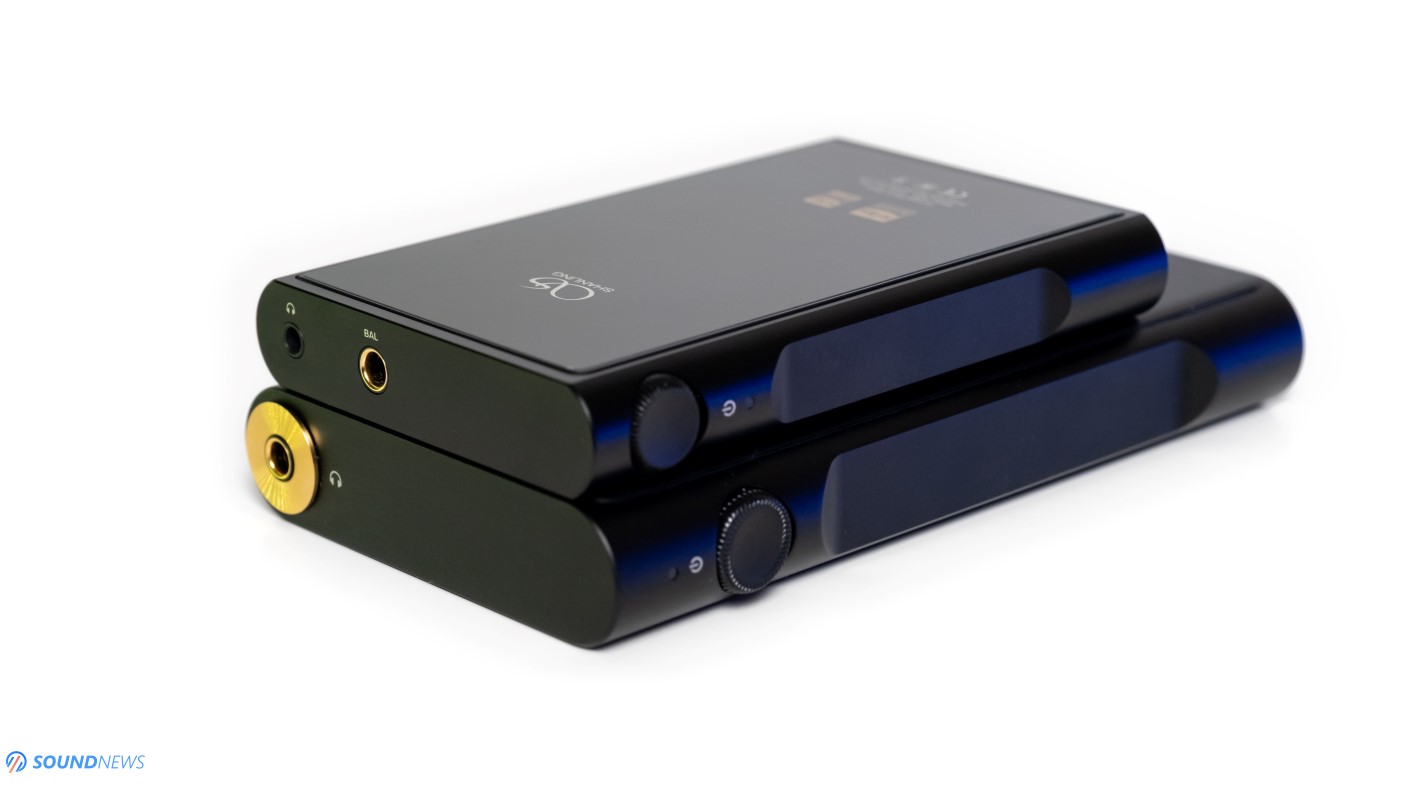
IV. Detail Retrieval
A dual ESS-Sabre configuration, without a single op-amp in the signal path and without any kind of current to voltage conversion stage can mean only one thing and that is a clean, transparent, detailed and undistorted type sound and I mean it! Connecting some of the most detailed headphones I have around I was able to spot plenty of micro-details in my tracks without going overboard with the volume.
Its linear frequency response, without a single drop or rise and its honest presentation highlights every musical note at the same intensity, meaning that focusing on anything particular becomes way too easy, it isn’t a challenge anymore. I don’t even need to close my eyes and engage my Sherlock Holmes skills; all those tiny details came towards me without any intervention from my part. I’ve tried several devices by now that carried the older generation ES9218 chips, like Shanling Q1, FiiO M3 PRO and BTR5 units and while those were quite resolving and clean sounding, M3X was just on a higher level altogether and that was felt without doing blind tests, it was so damn obvious from the start.
Listening to Richter in 24-bit PCM streamed via Qobuz, (here’s the track), I wasn’t surprised hearing people inhaling and exhaling air from their lungs, that became way too easy like a child’s play. When a musician started touching the flute performing his part, I felt the air moving in the room, I’ve heard his taps and gentle touches. Some other musicians came into the light, even more people started inhaling air in their lungs and that was heard naturally, like I was present at that performance, sitting just a few meters away from all that. I know this recording well and M3X was trying to show me everything that I needed to hear. Usually, an audio source tries to impress with some particular traits, M3X will surely mesmerize with its clean, detailed and highly transparent sound.
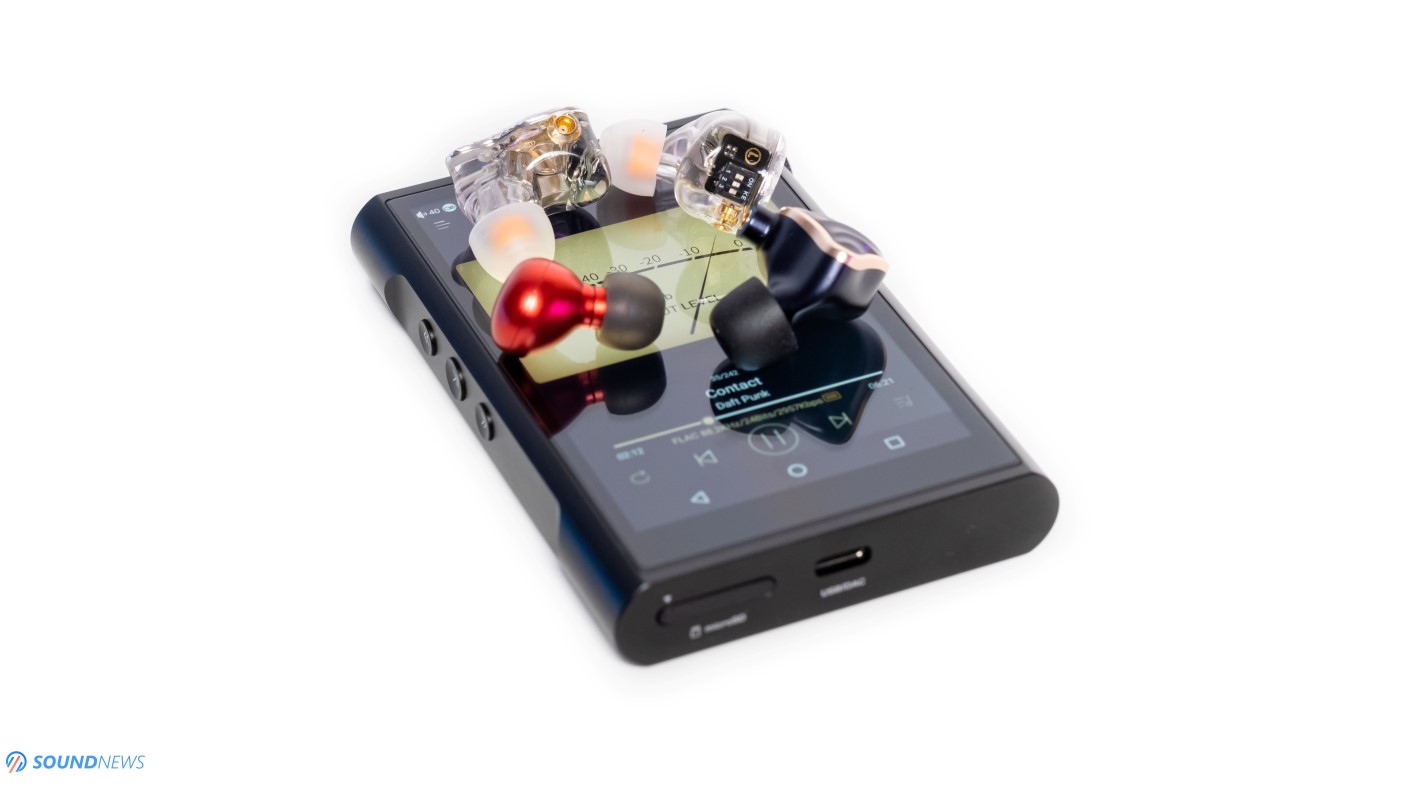
V. Noise Floor
Shanling mentions a maximum noise floor of 1.8 microVolts (uV) on its regular 3.5mm socket and 2.4 uV on all its balanced socket. As a point of comparison, Shanling M8 has it by a hair lower, at 1.7uV and 2.1uV respectively. FiiO M15 has it at 3 uV on its SE output and 5.2 uV on its balanced out. The best measuring headphone amplifier in terms of noise floor, has it at 1.9 uV at full power. By coincidence, I’m owning that amplifier which is absolutely dead silent with everything that is connected to it and the same can be said about the M3X. No matter the gain level, or the headphone jack, with all my sensitive IEMs I was simply mesmerized by the complete silence in all passages, there was nothing between them, just the unmistakable sound of silence.
Be them ultra-sensitive FiiO FA9 (113 db per 1mW) or FH7, be them Meze RAI Penta, Hiby Crystal6 or LittleDot Cu KIS, M3X was invisible in terms of noise floor, bringing to the surface the best out of those IEMs. When it dropped the noise floor to inaudible levels, channel separation and the feeling of air traveling around improved as well, leading to an engaging and punchy sound with all my IEMs. Background noise was nowhere to be found, it was as black as night, there weren’t nasty gremlins playing at higher volumes and no matter what headphone I would use, I knew that I can always rely on its clean and noiseless performance.
In the past such a noiseless performance was reserved only for upper-class (read: pricey) portable DAPs and I’m very pleased to experience the same immaculate cleanness and a lack of a noise floor at less than $400.
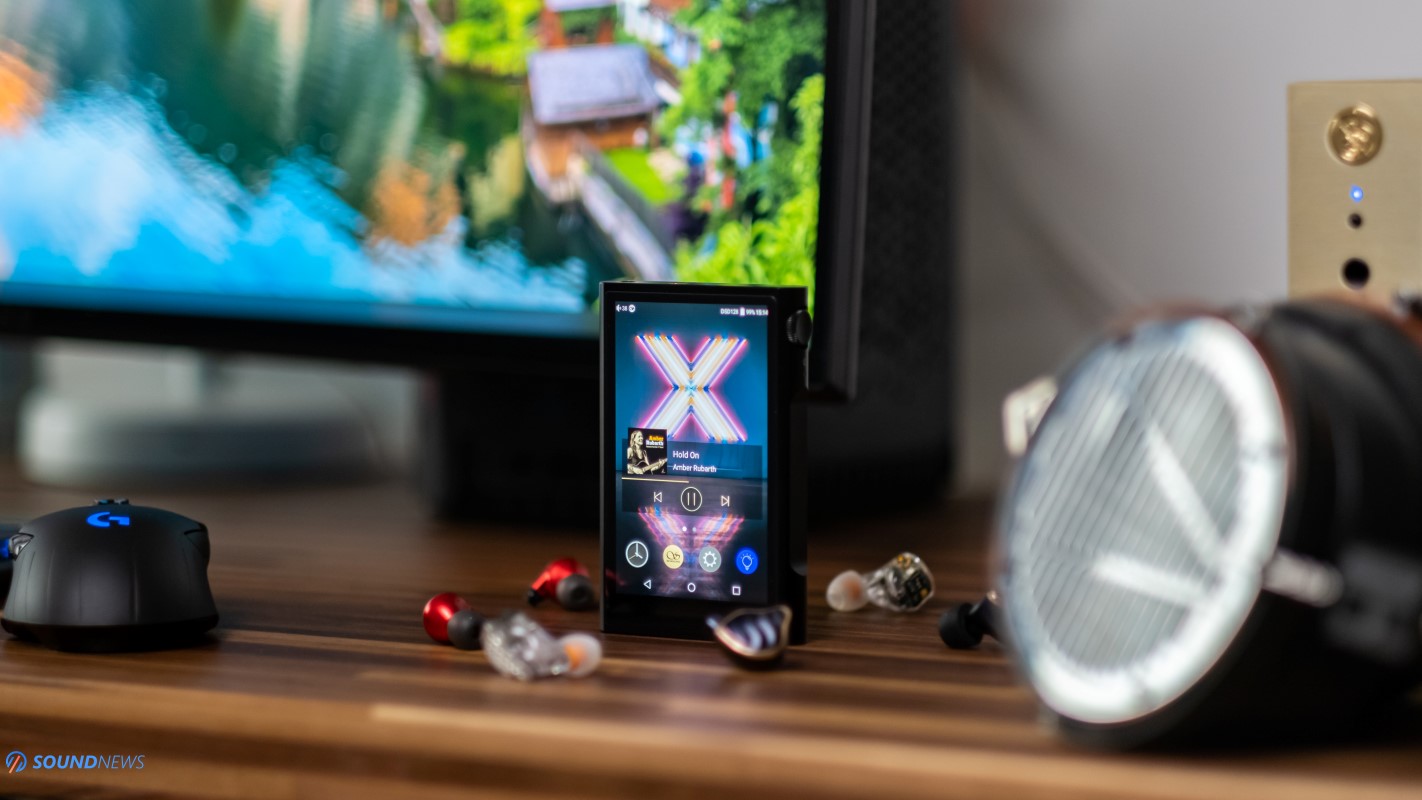
VI. Power Output
M3X offers a max power of 240mW of in 32Ω on its balanced out and considerably less on its single ended output, more exactly 100mW in the same load and while it doesn’t seem that much, it was plenty even for several desktop headphones, be them dynamic or planar-magnetic, it’s undeniably quite a powerful little devil. My sensitive IEMs were fully driven between 30 and 35 volume position (out of 100) on the high-gain setting and at around ~50 on the low-gain position. I didn’t spot any channel imbalance at any volume and I like that there is plenty of travel until I am reaching my desired volume, low-level listeners should be happy with this one.
Some open-back headphones sounded like they were driven by a powerful amp, sounding ballsy and quite hard slamming. Dynamic headphones such as Kennerton Vali and Gjallarhorn didn’t even need high-gain to be moved and the same can be said about the Erzetich Mania that were already way too loud on its balanced output, leaving plenty of steps for a higher headroom, just in case some high-dynamic range tracks would appear on my playlist. On the high gain and on the balanced out it could drive even planar-magnetic headphones such as Quad ERA-1, Kennerton Wodan and that mammoth that is Erzetich Phobos…Dynamics weren’t shy at all even with headphones of such caliber, the low-end didn’t lower its intensity, M3X was still running crazy like Forest Gump, never losing a single beat. I’ve already experienced plenty of portable devices that were able to drive these planar headphones and I’m gladly adding the M3X to that list.
As you can expect, all kinds of IEMs and portable over-ear headphones were fully driven to their max, it was fully controlling their drivers, dynamics were kicking and pounding without collapsing the soundstage in any way. Imagine my reaction when Hifiman HE1000SE were decently driven on its balanced output, with around 20 steps of volume left for higher dynamic swings. Considering its weight class and price point, I am more than happy with its power output and with the final result.
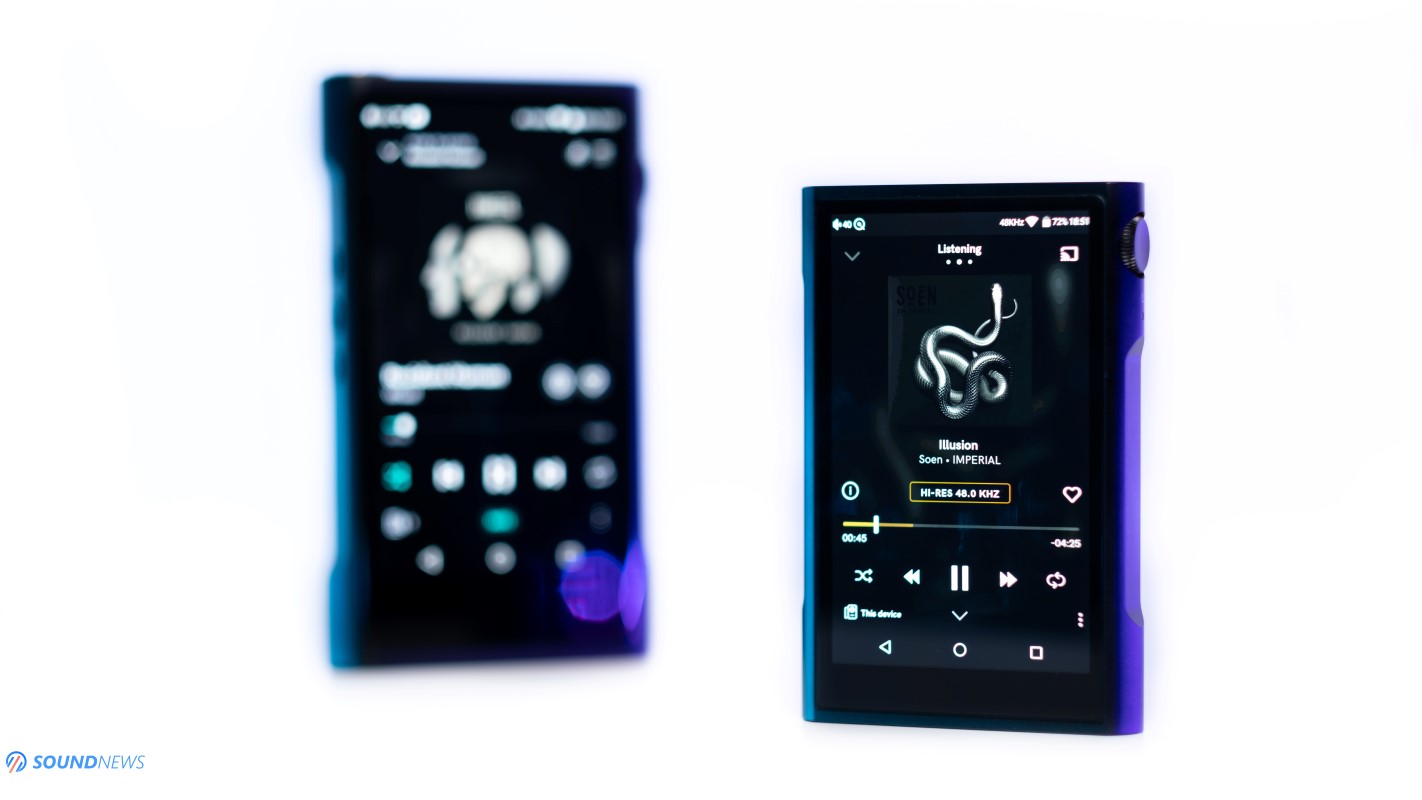
VII. Frequency Response
Even without any kind of burn-in, it was clear to me that Shanling M3X offers the whole package when it comes to frequency response, presenting a linear FR, without a single drop or rise, expanding it at both extremes like a respectable high-performance DAP would do.
A. Bass
When Doin’ it Right by Daft Punk (Qobuz / Tidal) started playing I’ve stood there being taken away by its close to perfect bass rendition. I’ve observed that it went extremely low, easily reaching 20 Hz notes with the right headphones, decaying that air mass slowly and gradually like there is a higher capacitance lurking somewhere inside. Bass notes felt weighty, punchy, quite layered, clean and completely undistorted, exactly how a high-quality type of bass should be delivered at all times. Snare drum hits had that raw energy that is difficult to describe by words, those tremors that are following felt deep inside my head and that was a clear sign that I am dealing with a nice bass performance. Be it sub or mid-bass, M3X offered warmth, the right presence and density while nicely controlling that air mass, keeping at bay all those nasty distortions.
B. Midrange
On one hand its midrange is nowhere near as deep, as involving, as sweet, as warm, smooth and soul grabbing as it is on their M8 DAP, on the other hand I don’t find it shy, thin or plasticky sounding at all. Its midrange stays linear and neutral for the most part and you’ll still find naturalness and emotions in right doses. There is still that grain and smoke in half century recordings, that are adding character to the final experience. There is a bit of refinement and warmth in here too if you use the right headphone. The most used one for this review was the Kennerton Wodan that pushed all the voices and mid-tones on the foreground, highlighting their beautiful texture, while improving its midrange delivery. I’m listening to this kind of midrange on a daily basis as my home DAC performs more or less the same.
C. Treble
Its Treble performance feels complete from the lowest to the highest registers, there is plenty of driver movement even past top octave and if you are searching for detailed double-drums, for clear and defined cymbals, then you came to the right party. I’m listening to a wide variety of music, ranging from something that will put you to sleep, to music that will scare away your neighbors for good and I do believe that a linear and extended frequency response is simply mandatory to play all that. While there is plenty of presence in the highest registers, I find it clean, detailed, but never harsh or bright sounding, even with treble intensive music.
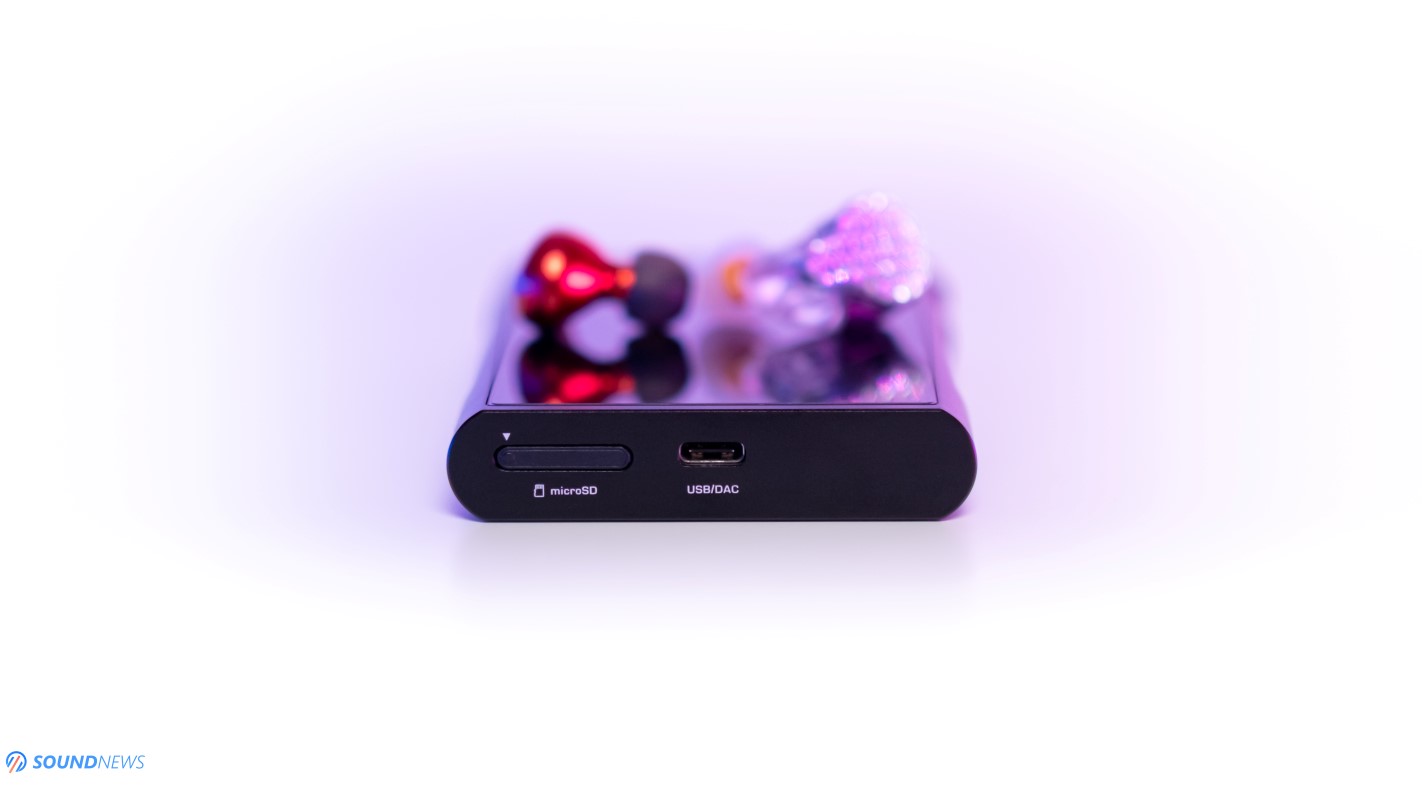
VIII. Wireless Performance
Shanling is not specifying the exact Bluetooth chipset, I presume it is something nicer from Qualcomm, it doesn’t seem to be their CSR8675, not the newest QCC5124 that have a slightly better codec support and a better range due to BT version 5.0. Nonetheless, LDAC and AptX-HD are present on the little one, so I’m more than happy that all my headphones would receive the best codecs there are.
I have connected a FiiO UTWS3 to it, driving a pair of FiiO FH7 and then a pair of Meze RAI Penta. The pairing process was easy and straightforward, its BT connection was stable and reliable and both IEMs sounded pretty good actually. I’ve walked around the room and somewhere between 3 and 4 meters, it would drop a few beats here and there. That is more than decent in my book, with a concrete wall between us at 2 meters away it was still holding nicely, again that is more than okay for me.
As a receiver, I’ve connected my smartphone to M3X, I used Tidal Hi-Fi app sending all data to it. Again, the pairing process was easy-peasy and the BT connection was rock steady even 6 meters away in an open space. I don’t particularly understand why would you use it as a receiver, because you can use any streaming apps directly from it, you can use your NAS, DLNA and UPnP servers with it and those will perform and sound better than a Bluetooth connection. But hey, additional features never hurt, it is always cool to have them at your disposal.
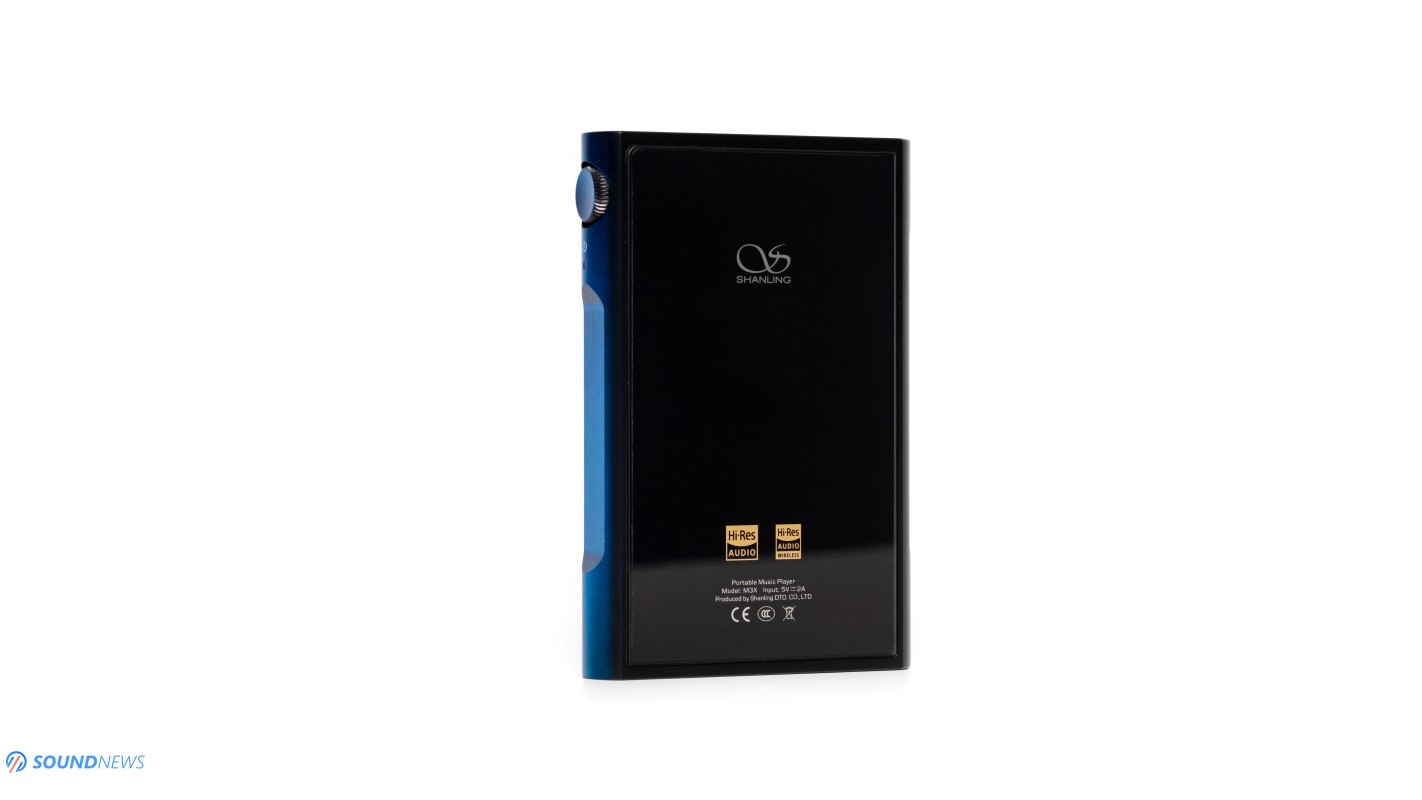
Conclusions
I don’t like rising sky-high things that don’t deserve it, but while testing the M3X in a span of two weeks, it felt like searching for cons as a needle in the haystack. Sure, it doesn’t have the warmest midrange delivery, the widest soundstage or the most powerful headphone output, but everything else felt on a very high level, offering gobs of technicalities while sounding dead-silent with the most sensitive IEMs. M3X might look cute and small enough on the outside, but its feature set is on par with the best DAPs out there. There isn’t a feature that M3X didn’t possess and that is precisely why it felt complete from the get go. Shanling has plenty of experience with DAPs at this point a little bit more than 25 years in the desktop audio business and I’ve felt that while inspecting, touching, playing and listening to their little gizmo.
To me this is not only a great sounding DAP, but a very complete one, offering endless possibilities due to an unlocked Android platform, while being as small and lightweight as possible. I’m not usually offering awards for portable DAPs, but those that moved and impressed me in some ways are fully deserving it. It just scored a Silver Award, Congratulations to the team and I am looking forward to their next doings!

Shanling M3X will cost you $339 and you can get it directly from their distributors right here, or you get it from Linsoul that are selling it worldwide, right here. If you get one, leave a comment below, I’d like to know how it performs with your headphone collection.
PROS:
- Cool and modern looking
- Amazing build quality, on par with their high-end offerings
- Fast response times
- Unlocked Android 7.1.1 with Google Play Store support
- Easy to use GUI, ergonomic button placement
- Very detailed and transparent sounding
- Goes mostly for a linear and extended frequency response
- Fast and punchy sounding
- Noise-less headphone jacks, worked great with sensitive IEMs
- Plenty of power even for several desktop headphones
- An amazing feature set! ( a 4-in-1 device)
- One of the nicest values right now
CONS:
- It isn’t coming with a case, you need to buy it separately
- Not the most impressive soundstage
- Some would prefer a warmer midrange delivery
ASSOCIATED EQUIPMENT:
- Sources: Xiaomi Mi 9T Pro, Corsair One i160
- DACs: Audiobyte HydraVox + HydraZap, Matrix Audio Element X, Gold Note DS-10 PLUS + PSU-10 EVO, Flux Lab Acoustics FCN-10, Topping D30 PRO, Gustard X26 PRO, X16 & some others
- DAPs: Shanling M3X, M8, FiiO M15
- Headphone Amps: Benchmark HPA4, Flux Lab Acoustics FCN-10, SMSL SP400, Gustard H16, Burson Soloist 3X, Singxer SA-1, Musician Andromeda, xDuoo XA-10
- Power Amps: KECES S300
- IEMs: FiiO FA9, FH7, FD5, Meze Rai Penta, Rai Solo, LittleDot Cu KIS, Hiby Crystal 6 & some others
- Portable headphones: Sennheiser Momentum 2, Meze 99 Classics
- Full-sized headphones: Hifiman Susvara, Hifiman HE1000SE, Hifiman Arya, Audeze LCD-4, Erzetich Phobos, Erzetich Mania, Quad ERA-1, Ollo S4X Reference, Kennerton Wodan, Magni, Gjallarhorn, Vali, M12S & some others
- Loudspeakers: KEF Reference 3
- Interconnects: QED Reference (x2), Topping TCX1 (x2)
- Speaker cables: Kimber PR8, Audioquest Type4
- Power Cables: Isotek EVO3 Premier (x3)
- Balanced Isolation Power Conditioners: PLiXiR Elite BAC400
